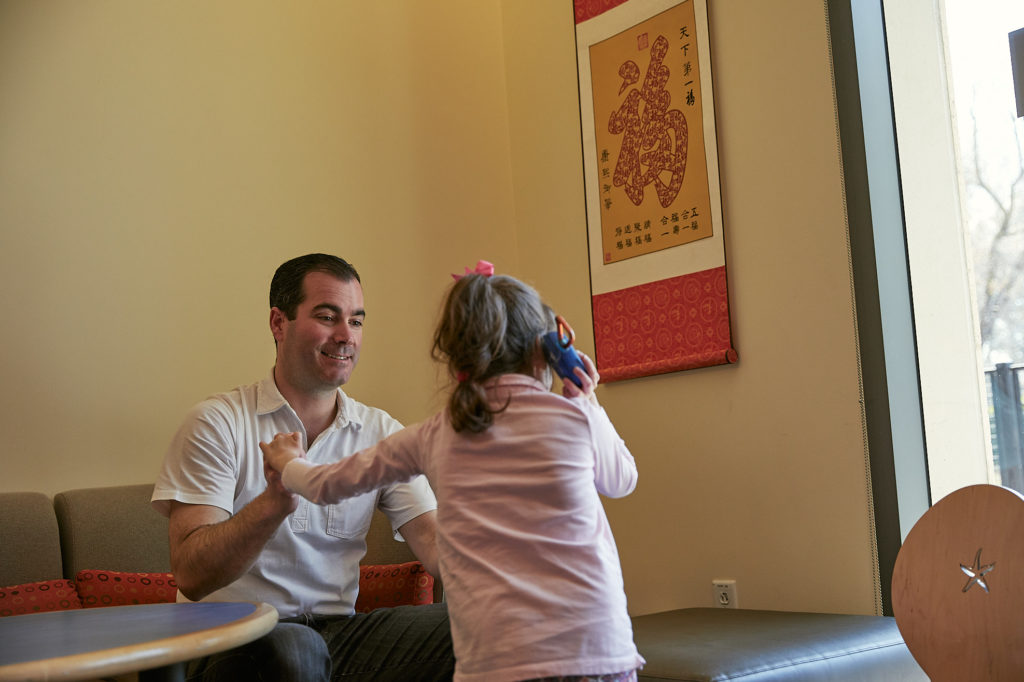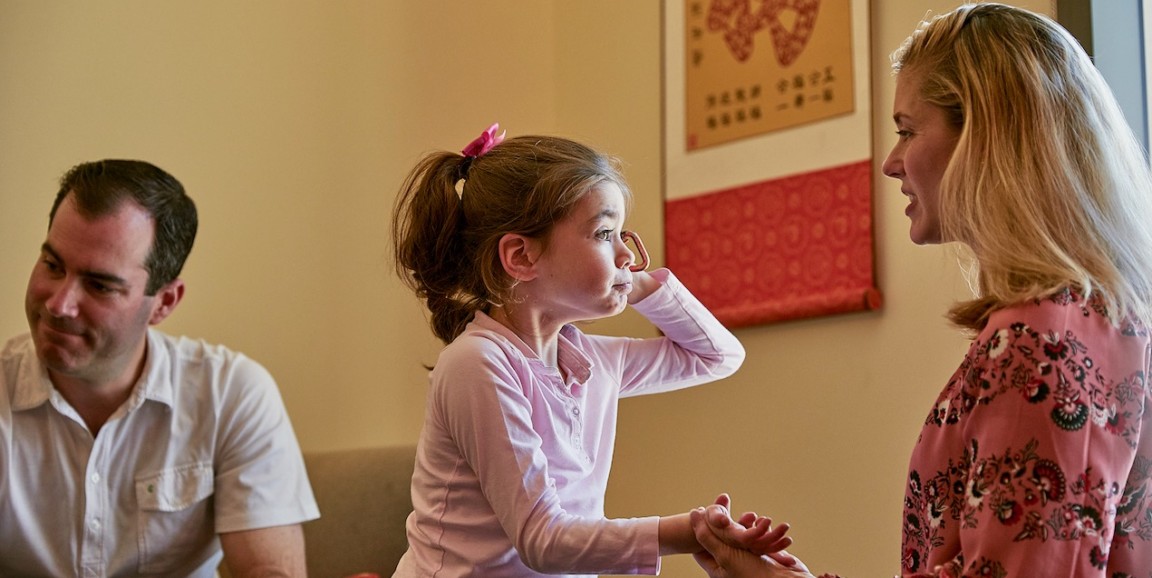Most of Stanford chemist Carolyn Bertozzi's stuff was still in boxes when she was first contacted by technology entrepreneur Matt Wilsey. It was September 2015, and Bertozzi had just moved from the University of California, Berkeley, to build Stanford's new ChEM-H institute.
As a two-part feature for the Stanford Business magazine describes, Wilsey was on a mission to cure his daughter. Grace, who's now 9, was born with an extremely rare genetic disorder that has robbed her of speech and caused developmental delays, muscle contractions and frequent flailing.
A mutation in Grace's N-glycanase 1 gene, known as NGLY1, was disrupting a critical process that breaks down damaged proteins. Grace is one of 54 known patients in the world with NGLY1-deficiency.

In 2014, Wilsey, who earned his MBA at Stanford Business, and his wife, Kristen, created the nonprofit Grace Science Foundation, to find a cure. The foundation has raised about $9 million to date.
As it happens, Bertozzi is a pioneer in glycoscience, the study of how sugar molecules interact with proteins.
The article explains:
Bertozzi was taken aback by her first conversation with Matt. "No one had ever come to me and said, 'Here's a patient. Here's the diagnosis. It's a mystery. I think you can help us figure out what's going on, and I'd like to fund a project in your lab.' That had never happened to me. I'd moved to Stanford with the hope of having such an opportunity."
Matt's pitch surprised Bertozzi for another reason: He insisted that any discoveries she and her team made on the foundation's behalf had to be shared immediately with other researchers. There was to be no hoarding of data, no waiting around for papers to be published for the sake of claiming credit.
Bertozzi joined the Grace Science Foundation's research team. In 2017, her investigations into NGLY1 deficiency led to an important discovery for cancer treatment. From there, Wilsey and Bertozzi launched a for-profit biotech company. As detailed in part 2 of the story, Wilsey believes it will have a drug ready for clinical trials by 2021.

But Wilsey stresses the business's central purpose is not to generate profits for shareholders:
Above all, Wilsey wants to find a cure for his daughter and other NGLY1 patients -- and perhaps unearth treatments for other rare diseases that don't get much attention from Big Pharma.
"The problem facing ultra-rare diseases is the lack of R&D dollars," Wilsey says. "Many pharmaceutical companies avoid rare conditions because the markets are so small. Grace Science will always invest in rare-disease R&D and make connections with more common diseases. That's core to our mission. We'll commercialize findings where we can, but our goal is to get safe and effective therapies into people as quickly as possible. If we do that, the sky's the limit, and we'll be successful on several levels."
Photos of Grace, Matt and Kristen Wilsey by Tom Hood




